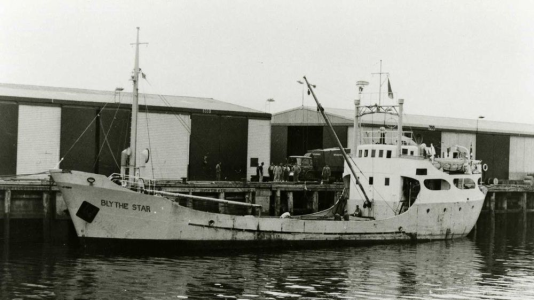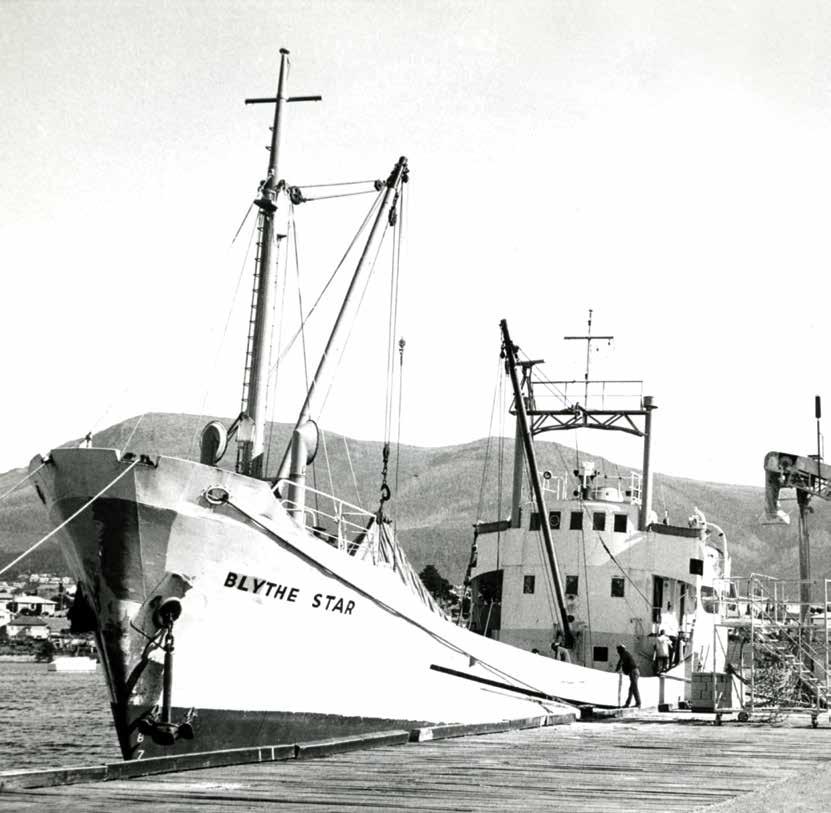The shocking truth behind this 50-year-old Australian maritime mystery!
If there's one heart-stopping tale that everyone should know, it's that of the MV Blythe Star. In 1973, the coastal freighter suddenly capsized and sank off the southwest coast of Tasmania while sailing from Hobart to King Island.
While all ten crew members on board were able to escape in an inflatable life raft, three tragically died before the survivors were eventually rescued 12 days later. Tasmanians were stunned by the ordeal—and even more shocked when, despite a major maritime search, no sign of the 44-metre vessel could be found for decades.

That is, until recently. Last month, a research team from the CSIRO and the University of Tasmania discovered the answer to the 50-year-old mystery, uncovering the MV Blythe Star wreck about 10.5km west of Tasmania's South West Cape.
Using multibeam sensors, underwater camera systems and seafloor mapping technology, the team confirmed the identity of the shipwreck, which was lying in water approximately 150m deep.
They also found that the ship was carrying fertiliser and beer kegs when it capsized and that the brave survivors had drifted up and down the coast with the shore in sight during their ordeal before eventually finding a small beach at the bottom of steep cliffs on the Forestier Peninsula to land their inflatable life raft.
On October 24, 1973, three of the remaining seven survivors finally climbed the steep cliffs and struggled through dense bush to reach safety, where to their surprise, the locals dismissed their claims with 'Nah, you're all dead.'
The story of the MV Blythe Star began in 1950 when the vessel was first registered in London. It was home to successful trading voyages between New Zealand and Australia before its ill-fated voyage in 1973. The tragedy shocked the small island community and prompted a major maritime search that lasted for weeks, with no trace of the vessel found until a research team from the CSIRO and University of Tasmania uncovered its wreckage last month.
At the time, there were many questions about how this accident could have happened. Locals noted there had been an unusually severe storm in the area on the day the vessel sank. Although it was never conclusively determined to be the cause of the sinking, the questions left those in Australia's maritime community looking for answers and spurred a wave of new regulations and safety laws meant to improve maritime safety. The tragedy and its resounding legacy had a profound effect on maritime safety laws in Australia.
 Safe to say, the story of the MV Blythe Star has gone down in Australian maritime history, leading to the implementation of major safety improvements. Needless to say, this is one mystery that we'll never forget!
Safe to say, the story of the MV Blythe Star has gone down in Australian maritime history, leading to the implementation of major safety improvements. Needless to say, this is one mystery that we'll never forget!
Members, if you ever find yourself in a similar situation, don't forget to remain calm and confident to help ensure your safety. Don't forget to sign up for the Seniors Discount Club newsletter here to receive our daily emails and breaking news alerts!
Remember to join the Seniors Discount Club newsletter to stay updated with our daily emails and breaking news alerts! We would also love to hear your thoughts on the story. What did you think of it?
While all ten crew members on board were able to escape in an inflatable life raft, three tragically died before the survivors were eventually rescued 12 days later. Tasmanians were stunned by the ordeal—and even more shocked when, despite a major maritime search, no sign of the 44-metre vessel could be found for decades.

In October 1973, the MV Blythe Star, a coastal freighter, met with an unfortunate incident and capsized off the southwestern coast of Tasmania. Source: CSIRO.
That is, until recently. Last month, a research team from the CSIRO and the University of Tasmania discovered the answer to the 50-year-old mystery, uncovering the MV Blythe Star wreck about 10.5km west of Tasmania's South West Cape.
Using multibeam sensors, underwater camera systems and seafloor mapping technology, the team confirmed the identity of the shipwreck, which was lying in water approximately 150m deep.
They also found that the ship was carrying fertiliser and beer kegs when it capsized and that the brave survivors had drifted up and down the coast with the shore in sight during their ordeal before eventually finding a small beach at the bottom of steep cliffs on the Forestier Peninsula to land their inflatable life raft.
On October 24, 1973, three of the remaining seven survivors finally climbed the steep cliffs and struggled through dense bush to reach safety, where to their surprise, the locals dismissed their claims with 'Nah, you're all dead.'
The Tragic Legacy of the MV Blythe Star
The disappearance of the MV Blythe Star on October 13, 1973, holds a special place in Australian history. The 44-metre-long coastal freighter was sailing from Hobart to King Island when it suddenly capsized and sank off the southwest coast of Tasmania, taking the lives of three of its ten crew members. This tragedy haunted Tasmanians for decades and led to much soul-searching.The story of the MV Blythe Star began in 1950 when the vessel was first registered in London. It was home to successful trading voyages between New Zealand and Australia before its ill-fated voyage in 1973. The tragedy shocked the small island community and prompted a major maritime search that lasted for weeks, with no trace of the vessel found until a research team from the CSIRO and University of Tasmania uncovered its wreckage last month.
At the time, there were many questions about how this accident could have happened. Locals noted there had been an unusually severe storm in the area on the day the vessel sank. Although it was never conclusively determined to be the cause of the sinking, the questions left those in Australia's maritime community looking for answers and spurred a wave of new regulations and safety laws meant to improve maritime safety. The tragedy and its resounding legacy had a profound effect on maritime safety laws in Australia.
Key Takeaways
- The 50-year-old mystery of the MV Blythe Star, an Australian ship that capsized and disappeared off Tasmania, has been solved, as the wreck was found by researchers from the CSIRO and the University of Tasmania.
- The ship sank in 1973, and out of its ten crew members, three died before the survivors were rescued 12 days later.
- The researchers confirmed the ship's identity using multibeam sensors and underwater camera systems.
- Following the tragedy, major improvements to maritime safety laws in Australia were introduced.
Members, if you ever find yourself in a similar situation, don't forget to remain calm and confident to help ensure your safety. Don't forget to sign up for the Seniors Discount Club newsletter here to receive our daily emails and breaking news alerts!
Remember to join the Seniors Discount Club newsletter to stay updated with our daily emails and breaking news alerts! We would also love to hear your thoughts on the story. What did you think of it?








